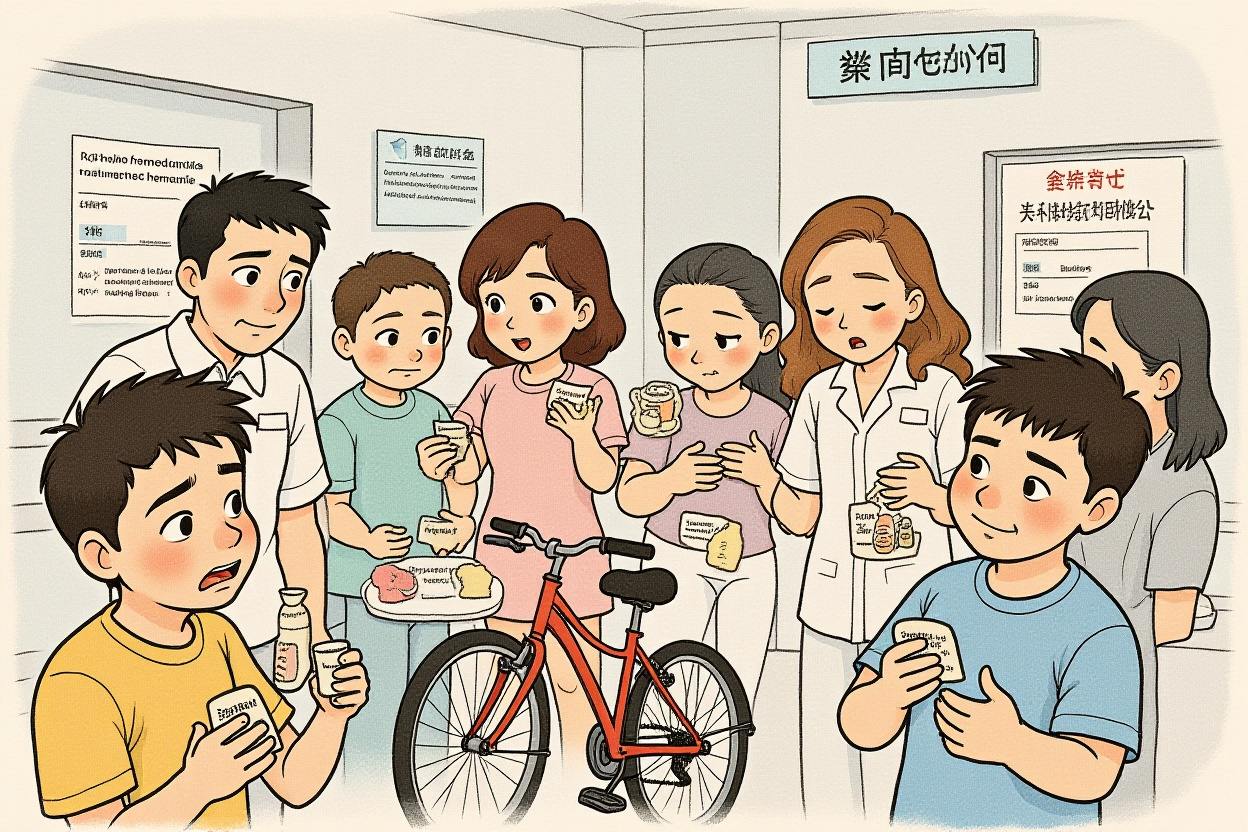Executive Summary: Chinese hemophilia patients face increasing barriers to accessing clotting factor medications due to tightened insurance policies following fraud cases. Insurance reimbursement restrictions now require physical proof of active bleeding before medication approval, disrupting preventive treatment protocols. Regional disparities in medical insurance coverage create unequal access to treatment across provinces. Pharmaceutical company assistance programs, once a lifeline for patients, are now under increased scrutiny and restriction. The situation highlights ongoing challenges in balancing insurance sustainability with patient care in China’s healthcare system.
The Growing Treatment Access Crisis: Xiang Huan (pseudonym) knows the precise sensation of internal bleeding before any visible signs appear. As a severe hemophilia patient, he can feel the heat spreading through his joints, the telltale sign of another spontaneous bleed that could lead to permanent joint damage if not treated immediately. His recent experience at a southern China tertiary hospital exemplifies the growing challenges facing China’s hemophilia community.
New Insurance Verification Requirements: Unlike previous years when doctors would trust patient reports of bleeding symptoms, Xiang now must undergo ultrasound confirmation of active bleeding before receiving reimbursement for his clotting factor medication. This process adds hours to his treatment timeline, during which joint damage continues to progress. The requirement for physical proof of bleeding represents a significant shift in how China’s medical insurance system manages hemophilia treatment approvals. Patients must now present used medication bottles with tracking codes to prove they’re not stockpiling or reselling medications. Prescriptions are limited to six bottles maximum, enough for only 2-3 days of treatment during an active bleed, despite medical guidelines recommending regular preventive dosing.
Insurance Fraud Fallout and Policy Changes: The tightening of prescription policies follows several high-profile insurance fraud cases involving hemophilia medications. In March 2024, a 30-year-old hemophilia patient was sentenced to 10.5 years for fraudulently obtaining and reselling medications, causing over 2 million yuan in insurance losses. Another case involving Shenzhou Cell Anjiayin medications revealed patients receiving kickbacks for obtaining unnecessary prescriptions.
Regional Disparities in Implementation: Policy changes are being implemented unevenly across China. Zhejiang province began tightening regulations as early as 2022, with Jinhua City reporting savings of 16.72 million yuan in hemophilia treatment costs that year. According to pharmaceutical representative Sun Yu (pseudonym), restrictions have increased in Heilongjiang, Inner Mongolia, Hebei, and Shandong provinces. Developed regions with higher insurance budgets are implementing various restriction clauses, while economically disadvantaged areas simply lack sufficient insurance funding altogether. This creates a postcode lottery for treatment access that leaves many patients without adequate medication.
Pharmaceutical Company Assistance Programs Under Scrutiny: The competitive landscape for hemophilia treatments has intensified since domestically produced recombinant coagulation factor VIII medications entered the market. With approximately 100,000 hemophilia patients in China and lifelong treatment requirements, pharmaceutical companies face intense pressure to capture market share.
Assistance Program Evolution: Patient assistance programs began with Bayer in 2018 and have become increasingly competitive. What started as modest transportation or nutritional subsidies of around 800 yuan has evolved into programs covering significant portions of patient copayments. Some programs reportedly covered 30-40% of out-of-pocket costs, essentially eliminating patient financial responsibility. Following fraud investigations, Shenzhou Cell suspended its Walking With You assistance program in seven provinces and regions starting November 15, 2024. The company now explicitly states that assistance plus insurance reimbursement cannot exceed 100% of medication costs.
Patient Dilemmas: Treatment Access Versus Financial Reality: The China Primary Health Care Foundation 2021 White Paper on Chinese Hemophilia Patients reports average annual treatment costs of 276,000 yuan for adult patients. For severe hemophilia patients following international treatment standards, costs can reach 600,000-700,000 yuan annually—a lifelong financial burden that few families can sustain without insurance support.
Clinical Trials as Treatment Access Strategy: Some desperate patients have turned to clinical trials as a way to access medication. Nanyang Mr. Wang, father of a 15-year-old hemophilia patient, reluctantly enrolled his son in pharmaceutical trials. While acknowledging potential risks, he explained: Participating in trials might have unknown risks, but not participating means insufficient medication leading to joint bleeding and disability—that’s certain. We can only take one step at a time. During trial participation, his son finally achieved international standard treatment levels and could participate in normal childhood activities like cycling, running, and physical education classes. However, when trials ended, treatment reverted to suboptimal levels due to insurance limitations.
Systemic Challenges and Potential Solutions: The core issue remains financial sustainability within China’s medical insurance system. While 2025 insurance reforms increased outpatient reimbursement ratios for chronic diseases like hemophilia to 80-90% in some regions, absolute coverage limits create barriers. In Henan Province, for example, the annual outpatient coverage limit of 120,000 yuan is exhausted within six months for severe patients, leaving families responsible for remaining costs.
Advocacy and Policy Progress: Patient advocates have achieved significant policy advancements over the years. Before hemophilia was classified as a special outpatient disease, outpatient reimbursement limits of 20,000 yuan were inadequate. Advocacy efforts led to increased limits of 300,000 yuan and improved access. Current advocacy focuses on removing age restrictions that prevent adults from receiving preventive treatment. The Chinese Hemophilia Management Guidelines 2024 edition already recommends removing age restrictions for preventive treatment coverage, aligning with international standards.
Moving Forward: Balancing Access and Sustainability: The hemophilia treatment crisis illustrates broader challenges in China’s healthcare system. While insurance fraud must be addressed, current crackdowns are creating unintended consequences for legitimate patients. The situation requires balanced solutions that protect insurance funds while ensuring patients receive appropriate care.
Comprehensive Approach Needed: Solving this crisis requires coordinated effort across multiple stakeholders. Insurance authorities need more sophisticated monitoring systems that distinguish between fraud and legitimate treatment. Pharmaceutical companies must develop sustainable business models that don’t rely on aggressive assistance programs. Healthcare providers require better education on hemophilia management standards. Most importantly, patients need sustainable access to medications that prevent debilitating joint damage and allow productive lives. As patient advocate Lao Chen notes, the goal remains no deaths, no disabilities, no pain—a simple but powerful objective that should guide policy decisions. International investors monitoring China’s healthcare sector should note how insurance reimbursement policies significantly impact pharmaceutical markets. Companies with products dependent on insurance reimbursement face regulatory risks, while those developing innovative pricing and delivery models may find opportunities in addressing these challenges. The current hemophilia treatment crisis represents both a challenge and opportunity for China’s healthcare system. By developing more sophisticated approaches to managing high-cost chronic conditions, China can create a more sustainable system that serves both patients and payers. The resolution of this issue will likely inform approaches to other specialized treatments within China’s evolving healthcare landscape.




